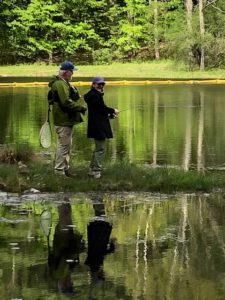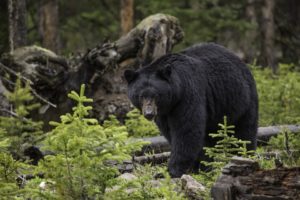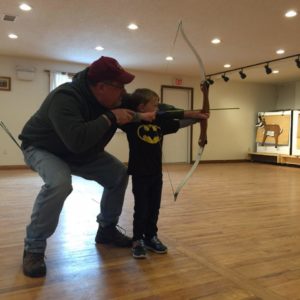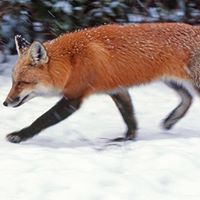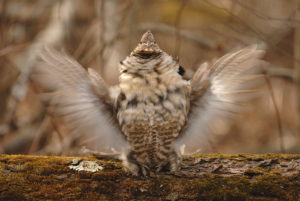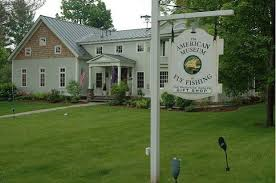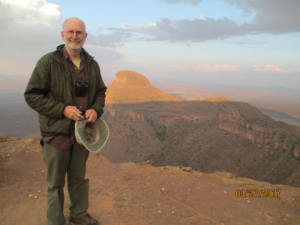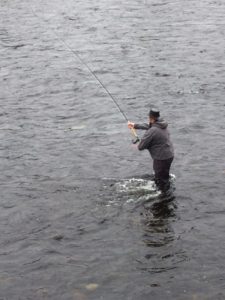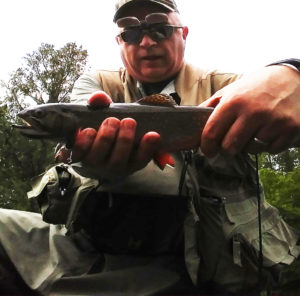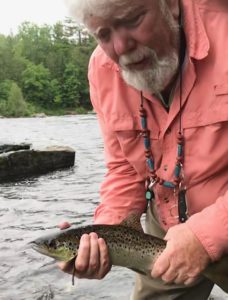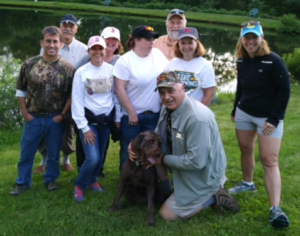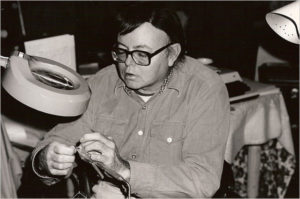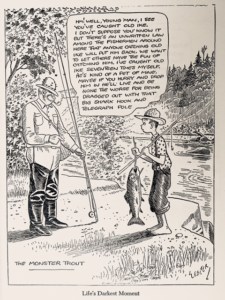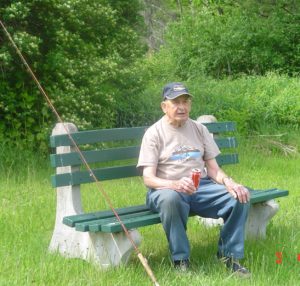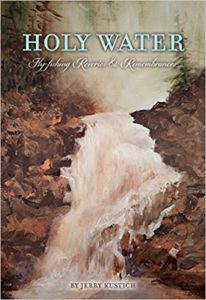Frequently this column includes pictures of young kids holding large fish that they caught. There will probably be some more in next week’s column, too, what with the Berkshire County League of Sportsmen Youth Outreach Fishing Derby and the Bateman Jimmy Fund Fishing Derby both of which took place yesterday. Who can resist seeing them with their big smiles. But you know, adults sometimes catch big fish, too.
Albert Adams of Pittsfield landed a beautiful brown trout out of Onota Lake on May 16. It weighed 7 lbs 8 oz on the DFW certified scales. It measured 26 inches and had a girth of 15 ½ inches.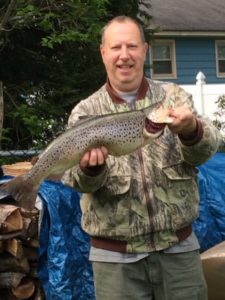
Albert was alone trolling a silver and blue Thomas Buoyant spoon from his boat in about 10 feet of water. The weather was magnificent. When the fish hit his lure, he knew it was a big fish and for a while thought it might be a smallmouth bass or a northern pike. It was when he brought the fish to the boat that he saw that it was a big brown trout. It was at that time that the fish realized what was going on and the battle really began. Albert fought it for a long time and thankfully his equipment held up and he was able to net it. The trout swallowed the lure deep and could not be expected to survive so he kept it.
He weighed it at the Onota Boat Livery, but their scales were not certified. Because the fish might be a State gold pin winner, they suggested that he weigh it at the DFW Headquarters in Dalton. It turned out that the brown trout is the second largest one caught in the state this year so Albert will have to settle for a bronze pin. He was told that the fish was stocked from the Palmer Hatchery.
Albert is having the fish mounted by Greg Gillette’s Taxidermy in Lanesborough.
Trout Stockings
There was only one river scheduled with trout last week. It was the Deerfield River in Buckland, Charlemont and Florida. The rest of the trout stockings were scheduled to take place in the following ponds and lakes: Lake Buel, Laurel Lake, Littleville Reservoir, Onota Lake, Otis Reservoir, Pontoosuc Lake and Windsor Pond.
According to Deb Lipa, Clerk from the DFW Western District Office, the official spring trout stocking season is over. On behalf of all of the local anglers, we thank Deb for providing the up-to-date stocking information for this column. I’m sure It resulted in extra work on her part. And thanks to Leanda Fontaine Gagnon for getting those beautiful trout into our waters. There were a lot of positive comments from anglers as to the size and condition of them.
Well done Mass DFW!
Anglers learn to fly fish through OLLI course
Eight enthusiastic anglers tried out their newly acquired fly fishing skills at the Wild Acres Pond in Pittsfield on May 21.
They included: Roxanne Suprina, Ed Neumuth, Gail Tardif Frazier, Colleen Budness, Dan Burkhard, Joe Horton, Paul Gniadek and Kevin Boisjolie. They were part of the 14 men and women who had taken a 6 -week course entitled Introduction to Fly Fishing. It was taught by Taconic Chapter of Trout Unlimited board members through the Osher Lifelong Learning Institute at Berkshire Community College (OLLI).
Teachers included Taconic TU President Henry Sweren and Board Members William Travis, John Burns, Fran Marzotto, Marc Hoechstetter and Richard ‘Dick’ Bordeau., some of the best flyfishers in the Berkshires.
The course included a video about the joys of fly-fishing. Other segments included an introduction to the gear and equipment, macro-invertebrates, fly casting, knots, fly selection, an overview of watersheds, the various fish species that inhabit them and two segments of fly fishing on water. The flies were tied by the instructors, LL Bean donated 3 rods, reels and lines and Orvis donated a rod, leaders and tippets.
It was a sunny but very windy day there at Wild Acres Pond that day. I expected to see line tangled around people’s heads and torsos, including mine. But to the contrary, the pond is somewhat sheltered from the wind and the anglers did surprisingly well in controlling their fly lines. They all appeared to be having a grand time. One angler told me that he had just retired and was interested in trying fly fishing and meeting other fly fishermen. Another person had fly fished in the past and discontinued it but was planning on taking it up again. A few anglers had never tried it before.
I didn’t see any fish caught but not due to lack of the student efforts or trainer skills. The fish just appeared to be sulking on the bottom of the pond. Perhaps they didn’t feel like eating during that wind. Oh well, the new fly fishers had another fly fishing trip scheduled on a river in a week or so. Maybe that is when they’ll get a little respect from those finicky fish.
Perhaps Gayle Tardif Frazier summed up the sentiments of the students best, “my thanks and gratitude for all of the patience, kindness and humor you have all shared to make this class an enjoyable experience! I look forward to seeing folks out fishing!”
There are new Striped Bass regulations
Lots of folks from the Berkshires travel east to Cape Cod annually to fish for stripers. It is a very popular sport, even for us landlubbers. Please be advised that the Massachusetts Division of Marine Fisheries has recently implemented two new striped bass conservation regulations aimed at reducing release mortality
Effective immediately, it is unlawful for any fisherman to gaff or attempt to gaff striped bass measuring less than 28 inches total length, and for a commercial fisherman fishing on an open commercial striped bass fishing day to gaff striped bass measuring less than 34 inches total length.
The prohibition on gaffing undersized striped bass (as opposed to all striped bass) takes into consideration safety concerns associated with expediently removing large striped bass from the water.
Effective next year (2020), recreational anglers not fishing aboard for-hire vessels will be required to use inline circle hooks when fishing for striped bass with whole or cut natural baits. This will include fishing with whole or cut natural baits while in possession of striped bass as well. 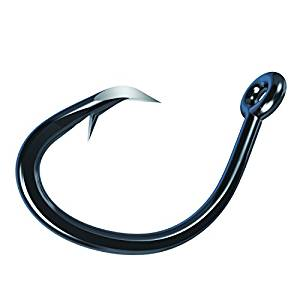
This circle hook mandate will not apply to natural baits attached to an artificial lure to be trolled, jigged, or casted and retrieved (e.g., tube and worm). Nor will the mandate apply to any natural bait affixed to a treble hook and fished using the snag and drop technique.
A hook is considered to be an in-line circle hook only if it is manufactured so the barb of the hook is in-line with the shank and bend of the hook and is turned perpendicularly back to the shank to form a circular or oval shape (see image).
In-line circle hooks are proven to substantially reduce striped bass release mortality compared to other hooks (e.g., j-hooks or offset circle hooks) by being far more likely to hook the fish in the lip or the mouth and not the gut or the gills. The circle hook mandate is targeted at private recreational anglers because this segment of the fishery is primarily hook-and-release and accounts for the vast majority of recreational striped bass catch in Massachusetts.
Why the change? Well, the most recent striped bass stock assessment found the species was being overfished. In addition, it demonstrated that release mortality from the recreational fishery is the single largest source of fishing mortality (48%). Accordingly, these actions have been taken to reduce release mortality in our fisheries. It is expected that the Atlantic States Marine Fisheries Commission will also take action this year to implement coastwide conservation measures for 2020 aimed at reducing overall fishing mortality.
For more information regarding the management of striped bass in Massachusetts, visit the website (www.mass.gov/marinefisheries) or call DMF at 617-626-1520.
Fishing Derby
The Berkshire Hatchery Foundation in Hartsville-New Marlborough is having its next free children’s fishing derby on Saturday, June 8, from 9:00 to 10:30 am at its lower pond. Children aged 12 and under must be accompanied by an adult.

